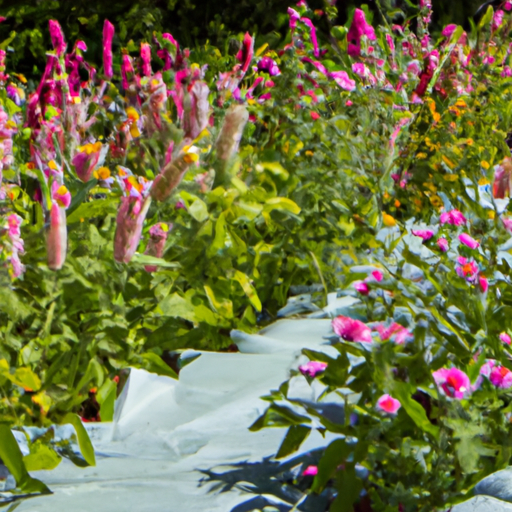Can You Plant Over Landscape Fabric? Exploring the Possibilities
Landscape fabric is a popular choice for gardeners and homeowners looking to control weeds and maintain a tidy landscape. However, if you’re considering planting new vegetation or making changes to your garden, you may be wondering if it’s possible to plant over landscape fabric. In this article, we will explore the possibilities and provide you with the information you need to make an informed decision.
Understanding Landscape Fabric
Landscape fabric, also known as weed barrier or weed control fabric, is a permeable material that is placed on the soil surface to prevent weed growth. It is typically made of woven or non-woven synthetic materials and is available in various thicknesses and grades. The primary purpose of landscape fabric is to suppress weed growth while allowing water, air, and nutrients to reach the plants’ roots.
Benefits of Using Landscape Fabric
Using landscape fabric offers several benefits, including:
1. Weed control: Landscape fabric effectively blocks sunlight, preventing weeds from germinating and growing. This reduces the need for manual weeding and minimizes competition for nutrients and water.
2. Moisture retention: The fabric helps retain moisture in the soil by reducing evaporation. This can be particularly beneficial in dry climates or during periods of drought.
3. Erosion prevention: By acting as a barrier, landscape fabric helps prevent soil erosion caused by wind or heavy rainfall.
4. Improved plant growth: With weeds controlled and moisture retained, plants can thrive and grow more efficiently.
Planting Over Landscape Fabric
While landscape fabric offers numerous advantages, it can pose some challenges when it comes to planting new vegetation or making changes to your garden layout. Here are a few considerations to keep in mind:
1. Permeability: Before planting over landscape fabric, ensure that it is permeable enough to allow water, air, and nutrients to reach the plants’ roots. Some landscape fabrics have a higher permeability rate than others, so choose one that suits your specific planting needs.
2. Cutting and removal: If you need to plant new vegetation, you will need to cut through the landscape fabric to create planting holes. Take care not to damage the fabric or leave any exposed edges that may lead to weed growth. When removing landscape fabric, be cautious not to disturb the soil or damage existing plants.
3. Mulching: Applying a layer of mulch over the landscape fabric can help improve its appearance and provide additional weed control. Mulch also helps retain moisture and regulate soil temperature, benefiting plant growth.
4. Maintenance: Regular maintenance is essential when planting over landscape fabric. Monitor the fabric for any signs of damage or weed growth and address them promptly. Additionally, ensure that the fabric is properly secured and covers the desired area to prevent weeds from infiltrating.
Conclusion
In conclusion, planting over landscape fabric is possible with proper planning and consideration. While landscape fabric offers significant benefits in terms of weed control, moisture retention, and erosion prevention, it may require additional steps when it comes to planting new vegetation or making changes to your garden. By understanding the permeability of the fabric, cutting and removing it carefully, and implementing proper maintenance, you can successfully plant over landscape fabric and enjoy a well-maintained and weed-free garden.




